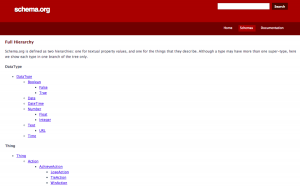
Sales and marketing alignment is difficult to achieve, but it’s also one of the best opportunities for improving business results. When marketing and sales teams are aligned, marketing ROI, sales productivity, and top line growth all go up. To get full alignment, it’s not enough to have leaders from both teams aligned. You need alignment and commitment with everyone (or at least the majority of people) on both teams. To do this, everyone needs to have an opportunity to provide input, contribute to decision-making and provide feedback. Without that, there are several ways that alignment can become even slightly wrong.
1. Not aligned on objectives and constraints
One of the first places planning goes slightly wrong is when not everyone is on the same page with objective(s) and constraints. For example, let’s consider planning a North American road show with the objective of finding new opportunities. Most times, the event is planned with a small subset of individuals from marketing and input from a few sales leaders. The issue here is that many of these people are quite removed from day to day interaction with customers. They also tend to have a broader perspective and will be motivated by different things than the sales and marketing teams that will be accountable for making the road show successful. While the planning team isn’t going to get the planning entirely wrong, it’s likely they could be less wrong by getting more input from those who talk to customers everyday. Input for local considerations should also be factored in. While a North American road show needs to take a broader perspective, it should still consider local requirements or issues. The strategy for growth may be subtly different in one city vs. the next. One city may be weighted towards one industry far more than another.
A shared understanding of objectives and constraints should be rich and inclusive. Otherwise, there’s too much room for teams to make assumptions where they fill in the blanks. The objective is to find new opportunities. But more specifically, to find opportunities within this industry because recent trends indicate interest. Most of the sales team feel they could create new opportunities on this topic if they can start the right conversation with their customers. While teams are ready to execute in the West, the Eastern region is constrained because pre-sales resources aren’t as available and so the focus ought to be on those offerings that require less support.
While it clearly isn’t going to be possible to accommodate everyone’s wishes, gathering input does two things. First, it puts all considerations on the table so that potential topics, demand generation strategies etc. can all be properly evaluated against a full set of criteria. Second, by having an opportunity to provide input in a transparent way, there will be a better understanding how options are being evaluated and this creates more commitment.
2. Not aligned on the best way to achieve the objective
One thing there’s never a shortage of when it comes to marketing is ideas on what should be done. And, in reality, all these ideas have at least some merit. It’s also true that one idea can spark other ideas. The best ideas are often combinations of different ideas. This is the other place that alignment goes wrong. Coming up with the plan includes too few people, which does two things. One, it means the planning team is missing valuable input. Two, it means that invariably, some teams are going to feel like they had a better idea that the one they ended up with.
If you’ve gone through the process of getting input on objectives and constraints, everyone should be able to come up with good ideas for achieving the objective. In our example of a road show, the ideas would be based on event topics, format, presenter, etc. It’s important that all this communication is centralized so that everyone benefits from the process. It leads to the best idea and it again increases commitment.
3. Not giving people a voice in the decision-making process
While consensus is not ever going to be a likely result, excluding people from voicing their opinion and having a say in the decision-making process definitely limits commitment when the end result isn’t what they wanted. The worst thing for commitment is when one team or a subset of individuals feel like decisions were made without their input and they had no say in how to best achieve a mutually defined objective. For the road show, it feels like an event series is being forced on them that they don’t believe addresses their concerns. As a result, they’re trying to build a pipeline of opportunities off of an event that they believe is only 60 or 70% as good as it could be.
Give sales and marketing an opportunity to vote, debate and work through solutions together. Input into the decision-making process should also be transparent and centralized. Individuals and teams should be able to discuss options with each other directly. Being stuck between two parties that disagree can be time consuming, unproductive and frustrating. Allowing feedback and discussion to again be centralized and transparent allows all parties to be part of the discussion. Although a consensus isn’t a likely outcome, the opportunity to discuss builds further understanding, trust, and alignment.
4. Not getting enough feedback
The last stage of the process is one where things often, once again, go slightly awry. Even though everyone has been part of the process up to the final stages, it’s still likely that there are differences in some of the subtleties of how the plan should be executed. With our roadshow example, invite copy, the agenda, who’s presenting and which venue is selected are all things that could be slightly off between one team’s expectations and another. The end result is a road show where people feel like what’s being taken to market isn’t quite as good as it could be. This leads to disengagement and less commitment.
Being more inclusive in feedback is the final step in ensuring you have both teams as aligned as possible and everyone is as close to fully committed to the success of the plan as is feasible.
Tools and processes
The big challenge with being more inclusive in planning, decision-making, and feedback is that it’s a lot of work and potentially unrealistic if you have a large number of people in both teams. If you’re a small team, you can get all the key stakeholders in a room over a set of meetings to complete the steps above. With more than eight to 10 people, however, this becomes unwieldily, inefficient and scheduling may become a challenge. If you start scaling this to dozens or hundreds of people, it becomes impossible to be inclusive if you’re going to rely on meetings and email.
If you’re going to do this successfully, you’re going to need a better collaboration tool to facilitate. Here are a few considerations:
- Communication should be centralized and transparent to everyone involved. You should be able to organize the communication around the project and various threads. Without a clear structure, multi-threaded communications become too complex to follow.
- The more people you include, the more complex scheduling gets, so communication should be optimized to allow people to contribute when and where they are able or inclined to. A notification system for when new content has been added will help them stay up to date on the discussion as it progresses, or as topics that are of particular interest to them come up.
- You should have some way of kicking off and ending different phases of the planning process. Each phase should be time bound to make sure that an overall project timeline and critical path can be maintained. Input for objectives and constraints. Input for the best ideas. Voting and commenting on which idea is best. Getting feedback on the final plan.
- The right actions need to be available to facilitate the process. To get a signal from the noise, you’re going to need a way of objectively looking at input and feedback. Voting as an example is one way to achieve this. In the roadshow example, lots of votes for one topic is a good way to understand where to focus. If someone dislikes an idea, they should also be able to provide this feedback and state why. Ultimately, you’ll want to be able to organize the ideas, votes and comments in a way that allows you to pull out and communicate insights.
- While not strictly necessary, being able to measure activity and contribution levels is useful. As you get better at a more inclusive collaboration process between sales and marketing, you’ll start to develop some benchmarks for your organization. Is 50% participation in a particular project good or bad? Is it indicative of the amount of commitment and success you can expect for the plan or project?
Sales and marketing alignment is hard, but there are steps that can be taken to improve it. Each incremental step towards improvement has a strong multiplier to the success and outcomes you can expect. The key to this is being more inclusive and focusing not just on input between leaders of both teams, but between the teams themselves. With large teams, the key to doing this is going beyond meetings and email and leveraging better collaboration tools to facilitate the process.
Business & Finance Articles on Business 2 Community(64)
Report Post





